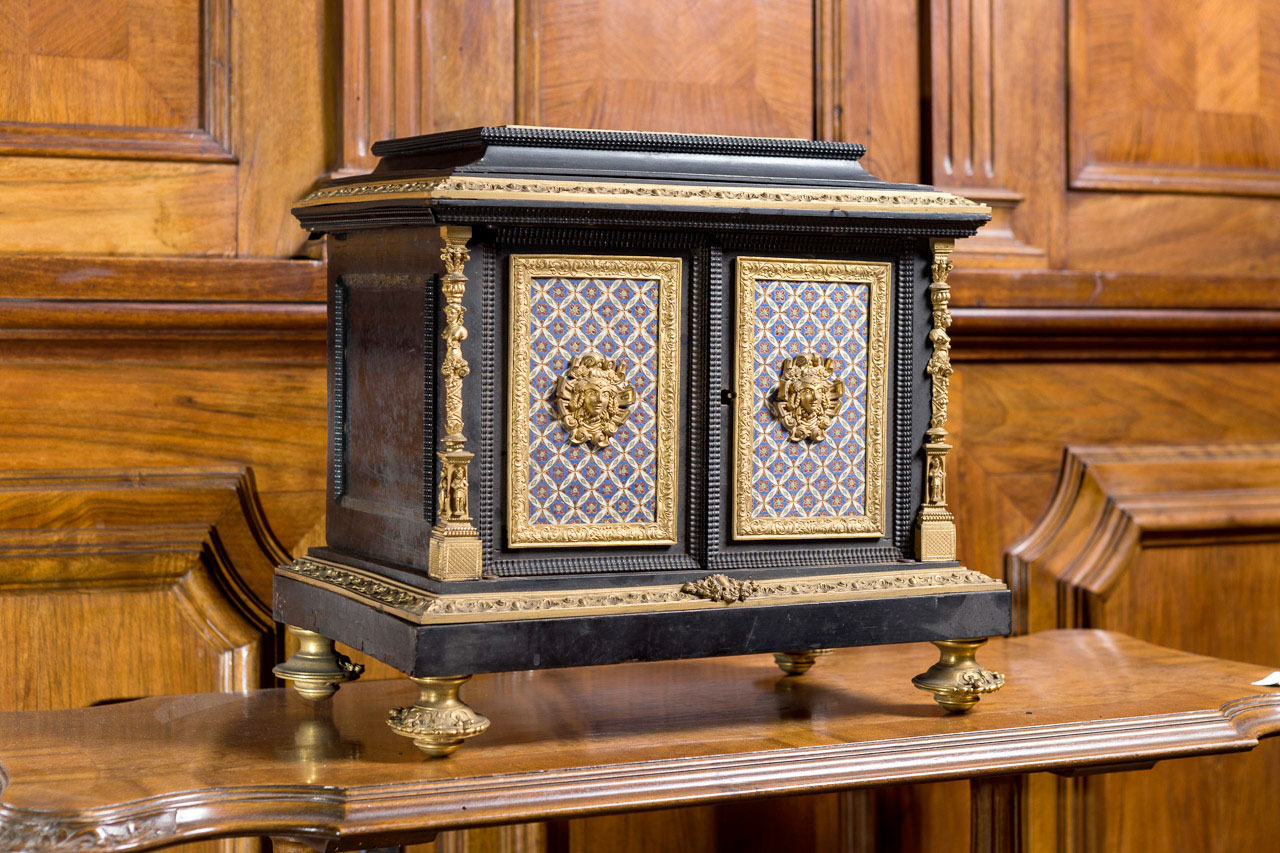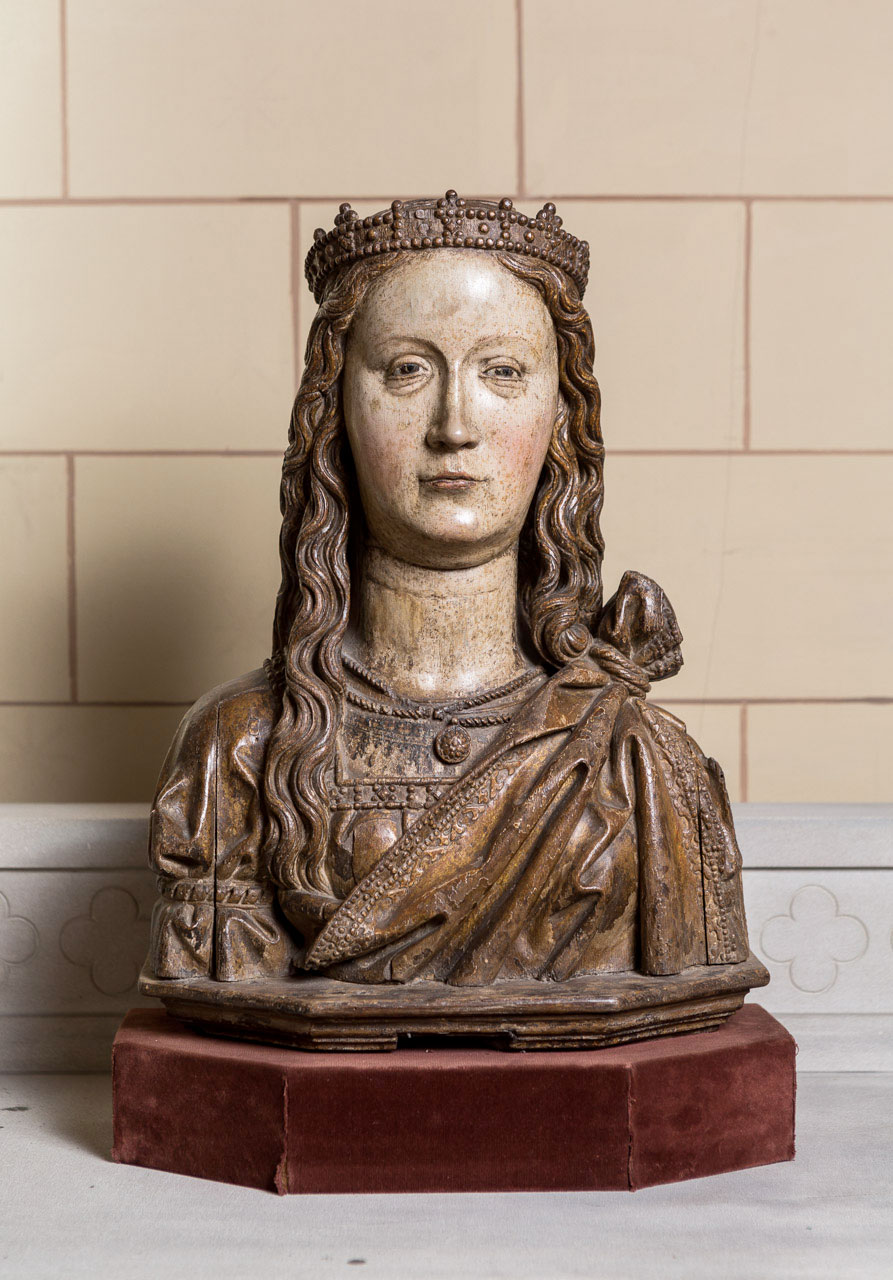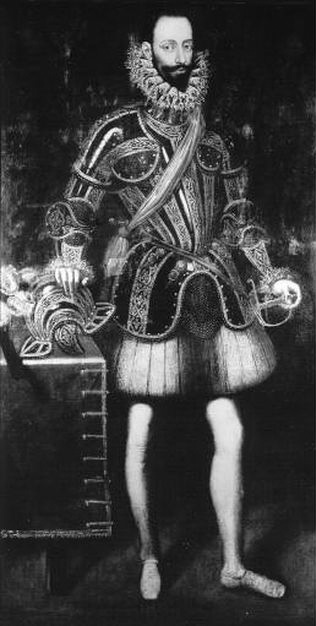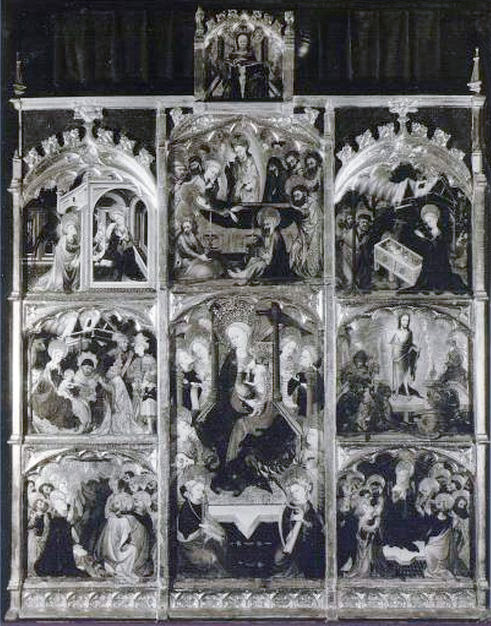Explore the collection
The collection’s dual origins
The catalogue of the Foundation’s artistic assets is made up of more than 2,000 objects, including artworks and decorative art pieces. Undoubtedly, the most valuable collection is the art, which is important in its own right, regardless of the setting where it is exhibited. Here, the Foundation’s art collection encompasses all the pieces that were part of the collection that Julio Muñoz Ramonet left to the city of Barcelona. Through a comparison of data from different sources, the pieces in the collection were inventoried. This identified which had been received when the Carrer de Muntaner property was recovered and which were missing.
To understand the composition of this collection, we need to look back at its dual origins: the Bosch i Catarineu collection and the subsequent acquisitions by Muñoz Ramonet.
Ròmul Bosch i Catarineu (1889?–1936) came from a family that was part of Barcelona’s political and economic elite. In the early twentieth century, the businessman became a partner and the director of the group of Catalan textile companies Unión Industrial Algodonera, S.A. (UIASA). His passion for collecting led him to amass a vast number of archaeological artefacts and artworks, until he was in possession of one of the most impressive collections in Catalonia. In an article from that time, Joaquim Folch i Torres describes it by splitting it into five categories: Catalan Romanesque and Gothic paintings; excavated glass and artefacts from Ibiza; Spanish, Flemish and French Baroque paintings; Catalan contemporary paintings; and miniatures.
In 1934, when the textile sector was deep in crisis, Bosch i Catarineu was forced to request a loan from the government of Catalonia’s Institute Against Involuntary Unemployment (ICAF, by its acronym in Catalan) in order to save his company. As a guarantee, he offered his art collection, which was then held at various museums in Barcelona. When Julio Muñoz Ramonet bought UIASA in the 1940s, he unknowingly became the new owner of the collection amassed by Ròmul Bosch i Catarineu, now deceased. Once the company’s debt with the ICAF was paid off in 1970, part of the Bosch i Catarineu collection was returned to its new owner. In an operation to execute the guarantee that had excluded part of the art collections and all of the archaeological pieces in the negotiations, 1,564 of the 2,619 objects initially deposited were eventually delivered to Muñoz. This set of returned artworks are an integral part of the art collection the businessman would bequeath to the city years later.
Legacy of incalculable value
The list of prestigious artists included in the inventory of the Bosch i Catarineu collection is nothing short of impressive: Lluís Borrassà, Pere Serra, Marià Fortuny, Eugenio Lucas, Francisco de Goya, Luis Paret y Alcázar, El Greco, Hermen Anglada Camarasa, Ramon Martí i Alsina, Joaquín Sorolla, Francisco Bayeu, Juan Carreño de Miranda, Antoni Viladomat, Anton Raphael Mengs, Franz Xaver Winterhalter, Juan Pantoja de la Cruz, Alonso Sánchez Coello, Giovanni Battista Tiepolo, José de Ribera, Isidre Nonell, Rembrandt, Bartolomé Esteban Murillo, Francisco de Zurbarán and Claude Monet, among others. As for the works themselves, they include Gothic panels such as the Our Lady of the Milk altarpiece by Gonçal Peris i Sarrià (1380–1451); Pere Serra’s panels (1357–1406) which were part of the main altarpiece dedicated to Saint Peter in Cubells Parish Church, in Lleida; Spanish Baroque canvases like the portrait of Cardinal Sabas Milini by Juan Carreño de Miranda (1614–1685); Renaissance paintings such as El Greco’s The Annunciation (1541–1614); and Romantic pieces, including Francisco de Goya’s (1746–1828) The Apparition of our Lady of the Pillar.
When Julio Muñoz Ramonet became the new owner of the collection in the mid-twentieth century, he saw it as a symbol of social prestige. In addition keeping it virtually unaltered, he decided to expand the collection with new acquisitions. These additions can be split into three categories.
The first is characterised by an attempt to continue what was already in the collection. To do so, Muñoz acquired medieval panels such as the Saint Catherine altarpiece by Mateu Ortoneda (1391–1433) and different paintings mainly from the seventeenth, eighteenth and nineteenth centuries, such as the series of five Catalan Baroque oil paintings by Antoni Viladomat (1678–1755) which depict scenes from the story of Joseph in Egypt.
The 1970s saw a turning point, when Muñoz may have started to add works to the collection for speculative reasons rather than because of his status as a collector. In this new phase, guided by his personal tastes instead of expert advice, Muñoz Ramonet focused on mass purchases of the works of contemporary figurative artists such as Arcadi Orpí, Félix Revello de Toro and Jordi Curós. The collection includes two extraordinary self-portraits by Curós from 1949 and 1950.
The third category consists of two series of modern murals that decorate the main house’s rooms, and the garden sculptures. These are the paintings by Ernest Santasusagna Santacreu (1900–1964) in the ‘Goyaesque’ room and the pieces by the Valencian painter Ramon Stolz Viciano (1903–1958) in the dining room. Both were artists with locally renowned careers who caught Muñoz’s attention. Also in this category are the sculptures by Josep Dunyach i Sala (1886–1957), Josep Cañas i Cañas (1905–2001) and Vicenç Navarro Romero (1888–1979), which can still be found in the garden.
In search of the missing artworks
Not much is known about the years when the collection belonged to Julio Muñoz Ramonet. The documentation on the subject is patchy, so many experts and professionals have had to conduct a lot of behind-the-scenes research to seek out the missing artworks.
Since the Foundation noticed that the most important set of works had practically disappeared, it has been fighting to piece back together the collection that Julio Muñoz Ramonet bequeathed to the city of Barcelona. Nonetheless, there is still a way to go before all the pieces recorded in the inventories are recovered.
The rescued pieces still held by the courts include Gothic panels, works from the Spanish Renaissance and Baroque, nineteenth-century Catalan paintings and art by some of the aforementioned great masters.
Unfortunately, a significant number of artworks have yet to be found. According to the expert report drafted by the Heritage Department of the Barcelona Institute of Culture (ICUB), the whereabouts of more than 380 paintings, drawings and sculptures of great artistic value are still unknown.






